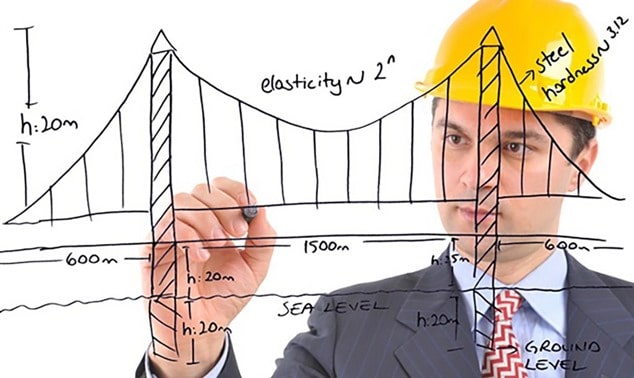Structural design engineer performs various roles and responsibilities in a construction project providing technical details for the activities to be performed at construction site.
Structural engineering is a wider discipline under the field of civil engineering. It is a vast topic with unlimited theories and practices. It’s a field that is still developing with huge innovations and ideas.
So being a structural engineer, the roles and responsibilities that have to be received is of greater importance.

The structural engineering is more concerned with the design and the physical integrity of the structures. These structures can be buildings, dams, tunnels, bridges etc.
The main focused responsibility of a structural engineer is to bring a structure that will ensure safety and durability till the service period.
The architects develop building only based on the size, shape and use of the building. But these have certain hidden technical issues during construction and after, that can be found and resolved only by the structural engineers. The structural engineers help the architects to achieve his or her vision of the project planned.
Roles and Responsibilities of Structural Design Engineers in Construction
A strong knowledge of physics, creative problem solving and three-dimensional conceptual skill must be gained by a structural engineer. Other than these, the roles and the responsibilities of the structural engineer includes:
- Structural Designing
- Site and Work Investigations
- Communication
- Construction Management
- Adequate Training
Structural Designing
Structural engineers are more graduated for structural detailing and their analysis. So, they are more in to design of structures. The structural designing procedures carried out by the structural engineers include calculating the loads and the stresses acting on the building, analysis for the loads, design of sections of structures to sustain the loads; so that the structure designed will withstand the loads predicted safely.
The structural engineers are also involved in the selection of materials best suited for the structure. This will hence ask for good knowledge about the different materials that are used in the construction at the current condition like their economic factors, strength factors and durability factors.
The quality factors of different building materials can be analyzed by a structural engineer to finalize their suitability in the design of the beams, columns or the foundations.
Another skill of a structural designer is the analysis of structures. This is presently carried out by the software like ETABS, STAAD, SAP etc. As years pass new software are being developed for the analysis of structures at different conditions of loads like wind, earthquake etc.
Most of the structural engineers have to study and work with these software with a knowledge of both the technical details and the programming details. In some organizations, the analysis is carried out by a programmer who may not have the civil engineering graduation but is assisted by a structural engineer.
Whatever be the mode of analysis done, the structural engineer must have the ability to understand and interpret the results from the software to know the validity of the values provided as output. Some organization won’t completely rely on the computer results, they conduct a separate man-made calculation for assurance.
Site Investigations
When dealing with the site investigation, the structural engineers are involved in checking the condition of the soil for the construction of the project. Based on the loads calculated by the designer, it must be checked whether the soil is suitable to bear the calculated loads.
This investigation will also decide the foundation systems that must be used for the structure. Any kind of treatment required for the soil too is decided based on the investigation. This investigation is carried out by testing the soil which is the part of geotechnical engineer.
Communication
Even though structural engineers are the ones that bring and develop the design ideas and detail, he can only see it happen on the site only if the structure is constructed as desired. For this, his interpretation and ideas have to conveyed with the other members of the projects.
The structural engineer has to coordinate and consult other members like the site engineers, other design engineers, geotechnical engineers, landscape architects, architects, project managers etc. Proper knowledge helps in spreading correct information among the group avoiding confusion and errors.
Construction Management
The management responsibility of a structural engineer starts from the collection of sufficient information for the project to the execution of different activities on the construction site. In certain critical situations, they are responsible for material and equipment delivery for undergoing a special task of the construction project. They conduct frequent checks of the on-site labor works and the activities.
Training Works
Not all structural engineers are trained for the complete responsibilities. Some are gained through years of experience and some standard skills through different training activities. As construction is an industry prone to more of safety issues, structural engineers are to be trained for strict standards of working.
Organization authorities can train the structural engineers for special quality certifications or for special analysis or design software. Proper knowledge of the National codes of the area is an important technical knowledge for any structural engineer.

No comments:
Post a Comment